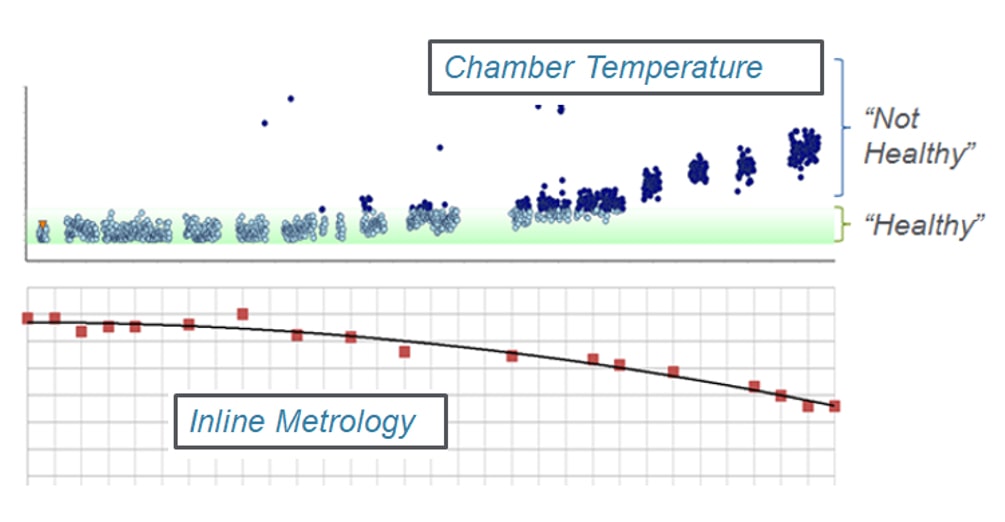Understanding SPC - FD systems integration
Having SPC and FD systems integrated into one platform provides a comprehensive view of the entire manufacturing process. Operators and engineers can monitor the process variables controlled by SPC and detect any faults or anomalies identified by the FD system. When SPC and FD data are integrated, it becomes easier to correlate process variations with potential faults and gain a deeper understanding of these relationships. This holistic view leads to more informed decision-making.
Such integration also streamlines data management, providing a centralized repository for all process-related information. By minimizing defects, optimizing processes, and reducing downtime, the integrated SPC-FD system leads to significant cost savings. Improved yield means more usable chips per production run, translating to higher revenues.
Correlating equipment data with inline measurements
There are many types of correlations that detect deviations from expected behavior early in the manufacturing process. Such connections optimize processes by adjusting parameters to reduce defects and improve efficiency. One such example is the Pearson Correlation Coefficient, which is a valuable tool for quantifying the strength and direction of this relationship.
The Pearson Correlation Coefficient
The Pearson Correlation Coefficient, often denoted as ‘r’, measures the linear relationship between two variables, X and Y. It ranges from -1 to 1, where:
- 1 indicates a perfect positive linear relationship.
- -1 indicates a perfect negative linear relationship.
- 0 indicates no linear relationship.
Figure 2 shows the behavior of different equipment sensors when measured in terms of immediate product measurements. As noticed, Sensor 1 shows a linear relationship and tells us there is significant effect on product dimensions. A coefficient of 0.99 indicates a positive correlation and it can guide us with root cause analysis when unexpected behaviors surface.
Implementing SPC with correlation analysis
Conclusion
In the competitive landscape of semiconductor production, where precision and efficiency are critical, having SPC and FD capabilities in one place provides a comprehensive approach to process management. It is not just about producing chips; it is about producing them with the highest quality, reliability, and efficiency possible.
As semiconductor technologies continue to advance, the role of SPC and correlation analysis will only grow in importance. Manufacturers embracing this integrated approach are poised to stay ahead of the curve, meeting the demands of today’s semiconductor market with confidence and agility. Applied SmartFactory is committed to delivering best in class practices to semiconductor manufacturers to help them achieve their standards for quality and efficiency.
FAQs
What is Statistical Process Control (SPC)?
What is a Fault Detection (FD) system?
Fault detection collects and analyzes equipment parameters to provide rapid feedback on process performance issues and avoid unexpected failures that decrease productivity.




